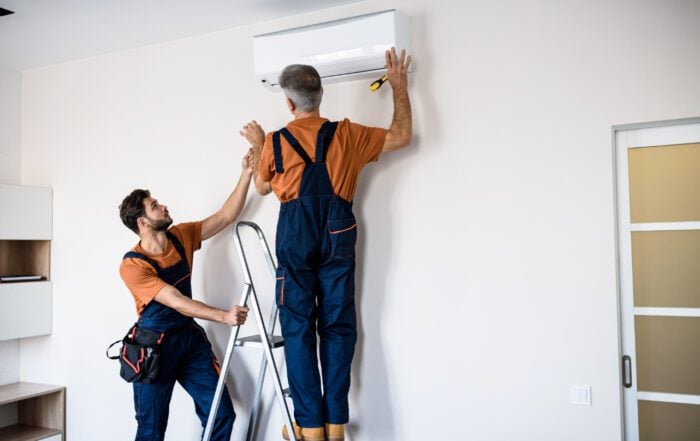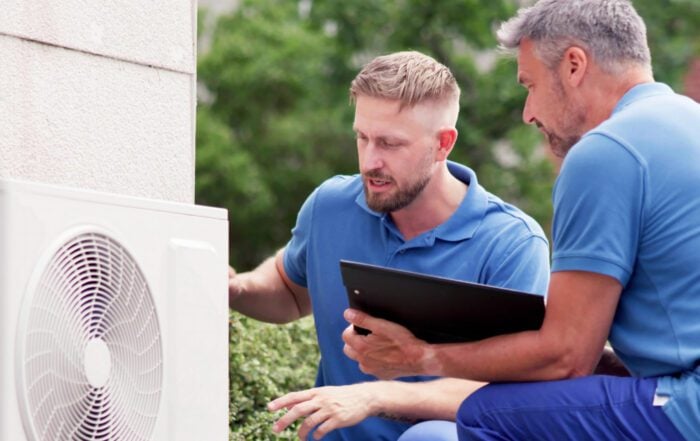In Northeast Ohio, the winterization of your home is crucial not only for comfort and efficiency but also for your family’s safety. When you take a little time to winterize your home, you’ll benefit throughout the upcoming months. Heating bills will here drop, and your home will be safer and more comfortable. There are several tasks an informed homeowner can tackle, as well as some that might be best left to the expertise of your qualified technicians.
DIY Tips to Winterize Your Home
Check the attic
If you can see the tops of the joists, you need more insulation. Insulation blocks the transfer of heat through your ceilings into the attic. This assists in the prevention of ice dams. (Keep reading for more on ice dams.) Blown-in or fiberglass batts are always available at home improvement centers, durable, and an inexpensive way to lower heating bills and winterize your home.
Fix air leaks
Go around to all your windows, exterior doors, and baseboards and look for places where drafts of cold air are getting into your home. Use exterior caulk, expanding foam, or weatherstripping to seal them. You’ll want to focus on areas around window frames and places where pipes, wires, and cables enter your home. Fresh weatherstripping keeps cold air from blowing indoors around exterior doors. If there’s a gap at the bottom, use a draft blocker or install a door sweep.
Also examine attic hatches, chimney flues, recessed lighting, switch plates, and holes where pipes, cables, and wiring enter your home from the outside. Wave a smoke pencil or a stick of incense to see if drafts are coming in. Seal these openings with insulation or weatherstripping as well.
Tend to the windows
A lot of heat can escape through your windows, even when they are closed and sealed. Hang the storm windows if you use them. If you have single-pane windows, use clear plastic window kits that help keep drafts out and slow the thermal transmission of heat outdoors.
Clean the gutters
If you don’t have leaf guards on your gutters, be sure they are clear of leaves and debris that can trap rain and snowmelt and damage the gutters and the edge of your roof. When gutters fill with leaves, water has a harder time draining. Keeping your gutters clean will also help eliminate the possibility of ice dams. Ice dams cause long, damaging icicles that hang from the edge of the roof and that are also a hazard when they break loose. (More on those below.)
Trim dead limbs
Before winter storms arrive, get rid of dead tree branches that, when caked with ice, are likely to break and cause damage.
Reverse Ceiling Fans
Reversing the direction of your ceiling fan to clockwise for the winter will help you save money and keep your home’s occupants warmer. The blades will push warm air down from the ceiling so that it reaches people at floor level while lifting cold air.
Test the smoke and carbon monoxide (CO) detectors
CO detectors tend to deplete batteries faster. So make it a point to check them monthly for safety.
Winterize to Prevent Ice Dams
The first clue that you may have ice dams on your roof is the large icicles hanging down from your eaves. Although you may find them beautiful because of their impressive in size and how they sparkle in the sunlight, they are a byproduct of potentially damaging ice dams at the edge of your roof.
What Are Ice Dams?
Ice dams are most often seen after heavy snowfalls or after your roof is covered with snow for prolonged periods of time. They occur when the heat in your attic melts the snow situated toward the peak of the roof. (Heat collects underneath the higher parts of the roof and starts melting the snow from the top down). This melted snow runs down your roof, meets the roof overhangs that have not been warmed as much, and refreezes. Over time, the ice can build up significantly which forces additional melted snow to pool up behind the dam. Eventually, that water will find its way into your attic and home, either through leaks or by “eating” spots in the roof.
Prevention
Thankfully, homeowners have some options to winterize their homes to reduce ice buildup on the roof, even in the snowy winters.
Insulation
A good layer of insulation — at least 12 inches — will do a lot to prevent the loss of heat through your roof. For most effective results, you should also insulate and seal the attic floor to keep heat energy and warm air from reaching the attic in the first place.
Ventilation
A well-insulated attic will benefit, in both warm and cold temperatures, from good airflow.
Caulking
Even the smallest hole in the attic floor can allow heated air to sneak in. Take care to seal all crevices and holes where wires and pipes pass through to prevent these leaks. Also, make sure you apply weatherstripping and insulation to the attic hatch. As a bonus, all of these steps will increase the energy efficiency of your heating and cooling systems and reduce your utility bills.
Professional Winterizing Services: When You Can’t DIY
Hire a chimney sweep
This is particularly important if you have and use a fireplace. Accumulation of soot can start home fires — and not the kind that stays in the fireplace.
Have your heating system professionally inspected
You can’t fully winterize your home without a heating system inspection. It’s never too late to call for maintenance, but it’s always better to do it before winter storms start in earnest. A system will operate more efficiently and safely when an HVAC technician cleans and adjusts it. You want to make sure sensors, thermostats and controls are working right, and that the heat exchanger and burners are functioning as they should. Routine maintenance checks include a ductwork inspection which is an essential step since ductwork problems can raise heating bills by as much as 60 percent. And don’t forget to change the filter regularly.
If you’d like more information and tips about winterizing your home, furnace maintenance, or other HVAC issues, contact Stack Heating, Cooling & Electric. We’ve provided HVAC services for the greater Cleveland area since 1976 and have achieved NATE certification — the highest achievement in the HVAC industry.
Have Any Questions?
If this is an emergency please call 440-937-9134.
Otherwise, please feel free to call us or submit this form to schedule an appointment for service or request an estimate. We will contact you shortly!



